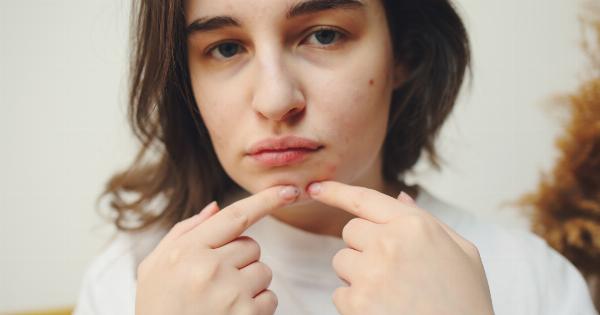Acne is a common skin condition that affects a majority of people at some point in their life. As annoying as it may be, it’s important to deal with acne properly.
Popping acne has become the go-to solution for many people, but it’s important to do it the right way. In this article, we’ll give you some tips on how to deal with popping your acne so that you can get rid of them without causing any further damage.
Why Do We Pop Acne?
Acne can be unsightly, uncomfortable, and downright irritating. It’s understandable when people want to pop them to get rid of the problem. Acne is caused by dead skin cells, oil buildup, and bacteria that can clog up pores.
Popping an acne pimple can help get rid of the pus, which can help it heal faster.
However, popping acne can also lead to further problems such as infections and scarring. It’s important to understand when and how to pop acne the right way so that it doesn’t worsen the situation.
When Should You Pop Acne?
It’s important to know that not all acne can or should be popped. There are some instances when it’s better to leave them alone. If the acne is painful or inflamed, it’s best to hold back from popping it.
Also, if the acne is still white or has not come to a head, it’s best not to pop it as it can cause further damage and even make it harder to get rid of.
It’s best to pop acne that is already at the surface of the skin and has developed a whitehead.
This type of acne pimple tends to be less painful and less inflamed, which means they are easier to deal with and are less likely to lead to further damage.
How to Pop Acne the Right Way?
Now that we’ve established when it’s appropriate to pop acne, let’s look at how to do it the right way. Here are some steps to follow to pop acne the right way:.
Step 1: Clean Your Face
Before you even attempt to pop acne, you should prepare your skin by washing it with a gentle cleanser. This will help remove any dirt, oil, and bacteria from your skin and reduce the risk of infection.
Step 2: Sterilize Your Hands and Tools
Make sure that your hands and tools are clean and free from germs. You can sterilize your hands by washing them with soap and water or using hand sanitizer.
You can sterilize the tools by wiping them down with rubbing alcohol or using a sterilizing solution.
Step 3: Apply Heat to the Area
Applying heat to the area can help soften the skin and make it easier to pop. You can use a warm compress or a warm towel to apply heat to the area. Make sure to hold it against the area for a few minutes to allow the heat to penetrate the skin.
Step 4: Use a Sterilized Needle or Extractor
Now that the acne pimple is ready to be popped, you can use a sterilized needle or extractor to puncture the whitehead. Make sure to insert the needle at an angle, rather than straight down, and gently apply pressure around the edges of the pimple.
You should see the pus start to come out.
Step 5: Apply Pressure Gently
You don’t want to apply too much pressure, as it can cause further damage to the skin. Apply gentle pressure until the pus has been completely drained from the pimple.
If the pus is not coming out easily, it may not be ready to pop, and you should stop and wait until it is.
Step 6: Clean the Area
Once you’ve successfully popped the acne, it’s important to clean the area with a gentle cleanser or alcohol to reduce the risk of infection.
Step 7: Apply a Spot Treatment
After you have cleaned the area, you can apply a spot treatment to reduce inflammation and promote healing. Salicylic acid or benzoyl peroxide can be effective spot treatments.
Conclusion
It’s important to pop acne the right way to reduce the risk of infection, scarring, and further damage to the skin.
Make sure to clean your face, sterilize your hands and tools, apply heat to the area, use a sterilized needle or extractor, apply pressure gently, clean the area, and apply a spot treatment to promote healing. Don’t forget that some acne cannot or should not be popped, so it’s important to leave them alone and seek professional advice and treatment if necessary.































